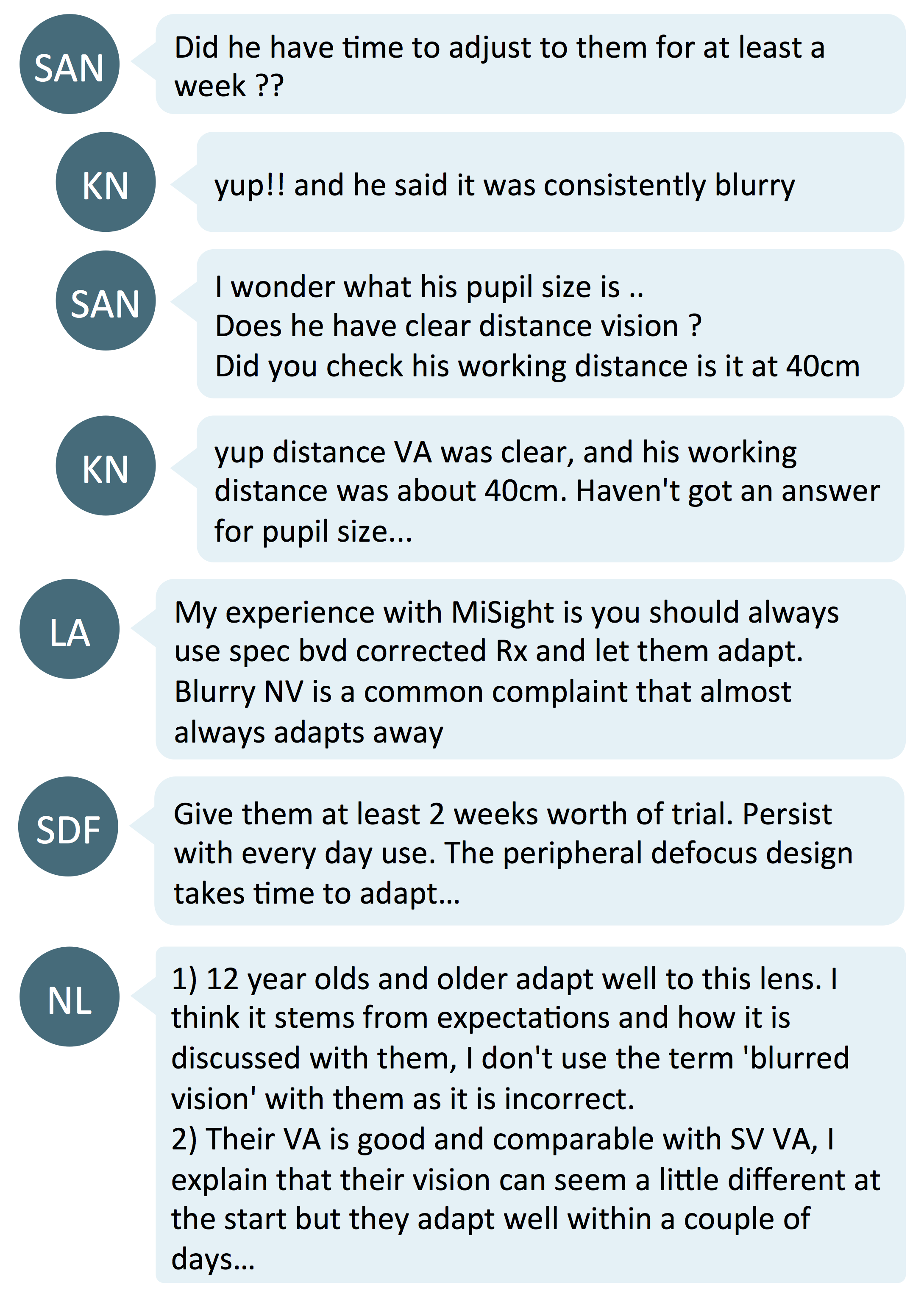With children spending more time on near activities nowadays, clear near vision is important. How much do myopia control contact lens designs influence near vision? Here is a case by KN about a child struggling with his near vision while wearing MiSight® 1 day contact lenses, and suggestions on how to manage it.

What are the possible reasons for reported near vision disturbance with MiSight 1 day?
1. Over-minus in the prescription
According to the MiSight 1 day Fitting Guide, we should reduce the prescribed contact lens power by a +0.25D step if distance vision is not affected in order to avoid over-correction. When this patient’s prescription was reduced by 0.25D, his near VA improved from N8 to N5. Hence, slight over-correction may have impacted near vision.
2. Adaptation time required

MiSight 1 day is a dual focus design comprising of 4 concentric optic zones, alternating distance correction and treatment zones with +2.00D of defocus. As these images are simultaneously presented to children, they may find that they initially “see” differently when compared with single vision lens corrections. Logan et al reported that there was no significant difference in distance and near visual acuity between MiSight 1 day and Proclear® 1 day, being 6/6 (20/20) or better at both distances.1 For this reason, commenters suggested to allow a longer adaptation period.
How can you manage expectations when prescribing MiSight 1 day?
Children may or may not have specific visual expectations with contact lens wear. When prescribing MiSight 1 day to a new wearer, the helpful comment from NL above indicates that it is better to describe their vision expectations at initial fitting as "a little different at the start," but that it will improve within the first week or so. While the MiSight 1 day Fitting Guide does mention that some wearers may experience reduced image contrast, ghost images, glare or halos around bright lights, this specific terminology is likely not helpful when described to children and their parents. NL also points out that using "the term 'blurred vision'... is incorrect" as it is an adaptation to the optics of the lens, rather than actual defocus.
Almost all children do adapt to MiSight 1 day - Sully et al2 found that 90% of MiSight 1 day wearers in the three-year clinical trial reported ‘not noticeable’ or ‘not annoying’ visual disturbances. While 10% of MiSight 1 day wearers reported ‘slightly annoying’ ghosting compared to 5% with the single vision (Proclear® 1 day) control contact lens, this did not affect wearing time and only one wearer of MiSight 1 day discontinued wear in the clinical trial due to vision.
Take home messages:
- Ensure that an accurate over-refraction has been done to achieve the best possible distance and near visual acuity.
- Some children may experience initial mild visual disturbances, but these symptoms usually improve after a period of consistent wear. Preparing children who notice this on fitting with the right expectations - that this is normal and should disappear within a week or so - is a key to fitting success.
Further reading
FDA Indications for use (US only): MiSight® 1 day (omafilcon A) soft (hydrophilic) contact lenses for daily wear are indicated for the correction of myopic ametropia and for slowing the progression of myopia in children with non-diseased eyes, who at the initiation of treatment are 8-12 years of age and have a refraction of -0.75 to -4.00 diopters (spherical equivalent) with ≤0.75 diopters of astigmatism. The lens is to be discarded after each removal.

About Kimberley
Kimberley Ngu is a clinical optometrist from Perth, Australia, with experience in patient education programs, having practiced in both Australia and Singapore.

About Connie
Connie Gan is a clinical optometrist from Kedah, Malaysia, who provides comprehensive vision care for children and runs the myopia management service in her clinical practice.
This content is brought to you thanks to an unrestricted educational grant from
References
- Logan N, Chamberlain P, Hunt C, Young G et al. Visual acuity, vision performance acceptability and subjective over-refraction in myopic children wearing dual-focus contact lenses. Contact Lens Anterior Eye 2021;44:S1-21. (link)
- Sulley A, Young G, Hunt C, Lumb E, Chamberlain P. Wearer Experience and Subjective Responses with Dual Focus Compared to Spherical, Single Vision Soft Contact Lenses in Children during a 3-year Clinical Trial. Optom Vis Sci 2019;poster 195252. (link)











